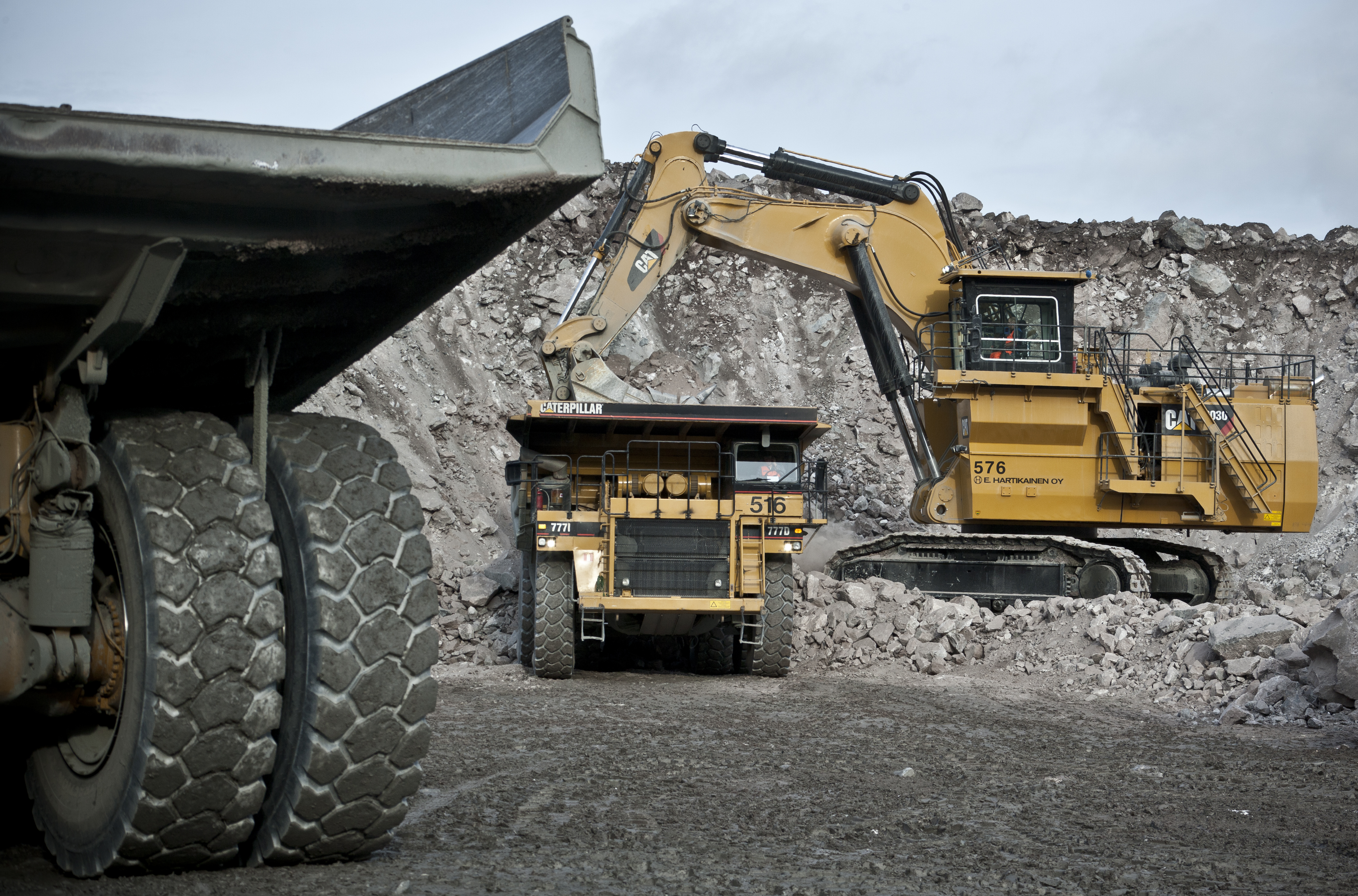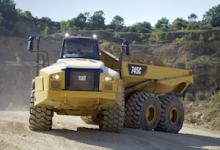
Caterpillar’s Driver Safety System (DSS) is a proven success in North and South America, Australia and parts of Africa, helping mining and aggregates companies and contractors dramatically cut incidents of fleet operator fatigue and distraction. An updated global version of DSS is now being made more widely available through Caterpillar dealerships in key regional markets such as Europe, the Middle East and South East Asia. Guy Woodford learns more about its significance to wider global aggregates customers.
If you are operating a 30tonne hauler on a quarry site and you momentarily fall asleep at the wheel of your moving truck, it could lead to a fatality. Indeed, it could be more of a question of when, not if, death or serious injury occurs if such fatigue-induced behaviour by one or more operators continues unchecked.
A five-second video clip showing the fatigue or distraction incident is sent to a 24-hour monitoring centre in Illinois, USA, where Caterpillar safety advisors classify and confirm the event. These experts analyse the data and then communicate directly with the site when events happen to provide near real-time notifications. Cat’s monitoring centre also provides customised reporting with site-level trends and recommendations.
Crucially, DSS is machine-agnostic, greatly enhancing its potential attractiveness to mixed fleet quarry operators and contractors, following its now greater availability through Cat dealerships in Europe, Asia (excluding China) Africa and the Middle East.
“We have had a lot of success with DSS among mining and aggregates customers in North America, Australia and parts of Africa,” says David Edwards, Caterpillar’s product manager for safety technology. “Most companies don’t really have an appreciation of the risk they are working under. It’s been normalised. What we are trying to do is allow them to see the level of risk that is going on and how that could be mitigated with technology and change management.
“When truck operators see in-cab camera footage of themselves falling asleep at the wheel it shocks them. It has the potential to change their habits. The DSS is ideal for any operation which requires its machine operators to work odd hours, with very early starts and late finishes. Such hours are commonplace not just in mining, but also in aggregate and cement businesses. If you are an operator getting three or four hours sleep on a regular basis, you will have the same fatigue issues.”
Edwards says that as well as significantly reducing fatigue or distraction events, the use of the Cat DSS leads to fewer operator errors and improved driving habits. “This reduces machine wear, leading to lower maintenance costs for business owners, thus creating a win-win of better operator safety and lower fleet servicing bills.”
What Cat DSS offers can be seen as an important addition to the key machine fleet performance data, including tonne processing volumes, fuel use and idling times, that mining and aggregates customers can obtain through Cat Product Link and VisionLink.
Cat DSS has proven a big success at PotashCorp’s major phosphate mine in Aurora, North Carolina, USA. There, the system is installed in the cabs of the site’s extensive haul truck fleet.
JP Whitford, the PotashCorp Aurora mine’s safety specialist, said: “Our Cat rigid haul trucks operate around 10 hours a day, constantly driving material back and forth. It can be very easy for an operator to become fatigued, and we want to stay on top of their activities and monitoring them and helping them to be safe.”
John Horne, safety director, said: “We had an operator who had some issues the night before and came to work and fell asleep at the wheel, driving a 40tonne haul truck over a half tonne pick-up. This created significant exposure [to danger], so when we saw this technology we realised it was the perfect fit for our operations.”
As part of its work with PotashCorp in Aurora, Caterpillar conducted a three-phased fatigue risk management study. A ‘blind’ Cat DSS study of truck operators’ working patterns was followed by the use of activated DSS in-vehicle seat vibrations and audio alarms, along with the use, by some truck operators, of the Cat Smartband wearable technology to identify their quality and quantity of sleep and prime times of fatigue. Cat’s Fatigue Intervention Plan, whereby Caterpillar’s 24/7 monitoring team contact Aurora site champions in the event of a confirmed fatigue or distraction event, marked the third and final study phase. The overall study’s findings were presented by Caterpillar to PotashCorp Aurora management in a detailed, analytical report.
Notably, between phases 1 and 3 of the study, there was a staggering 97% reduction in fatigue and distraction events.
“What really interested me in the technology is the level of engagement,” said Horne. “Through the [Caterpillar 24/7] call centre in Illinois, we can have direct feedback to our frontline supervisors.”
Rob Jenner, the mine superintendent, added: “When I heard about the study and what solutions Caterpillar could offer us, I was very excited. Our highest priority is the safety of our workforce. If we can’t ensure that then we are not effectively doing our job.”
Regarding the working relationship with Potash, Caterpillar’s David Edwards says: “There was a lot of scepticism among operators at Potash when the company adopted the Cat DSS. Initially many of them thought “Someone’s going to be watching me.” But after they used the system their perspectives changed to “Someone’s watching to protect me if I fall.” They see the support it offers.
“We find that many aggregates companies we have had conversations with have not formulated a comprehensive health and safety management system that includes fatigue risk management policies and procedures. With DSS used as part of a wider Caterpillar fatigue risk management programme, we have shiftwork professionals that can help companies build a detailed fatigue risk management system to incorporate into their existing health and safety management system.”
Edwards, who holds a PhD in Human Factors from the University of Alabama at Birmingham, USA, believes that the business case for the wider global market take-up of Cat DSS and fatigue risk management studies has grown partly from the current world economic climate, with many aggregates and cement business owners looking to maximise the output of existing personnel rather than spending money hiring additional machine operators.
He believes that Europe offers a big potential market for the Cat DSS. The system attracted a great deal of interest when showcased at the steinexpo 2017 construction materials industry exhibition in Germany. “It’s new technology within the European market. We’ve had mining companies in Norway and Finland interested in the system for some time, but we have only recently had the product become commercially available in these markets.
“We’ve also seen a lot of interest in Cat DSS in South East Asia, in countries like Laos and Indonesia. Some of this may be driven by tougher government safety legislation. Many companies are seeing what is being done differently around health and safety in other parts of the world, so they’re being pro-active in this area.”
In an age of constant technological improvement and innovation, does Edwards believe that Cat DSS can be improved? “We are constantly looking at worksite areas where this system can be used. Being able to allow customers to turn Cat DSS on and off so that it is only used in geotagged zones that have the highest risk of operator fatigue, is a new feature we are releasing in Q1 2018.
“We are also planning to add a forward-facing camera into the DSS so that customers can see what’s happening in the environment outside the cab when an operator is falling asleep. We are always looking to improve algorithms used by the system and want to be trending individual operator habits over time so they and company bosses have as much information as possible with which to act on.”







